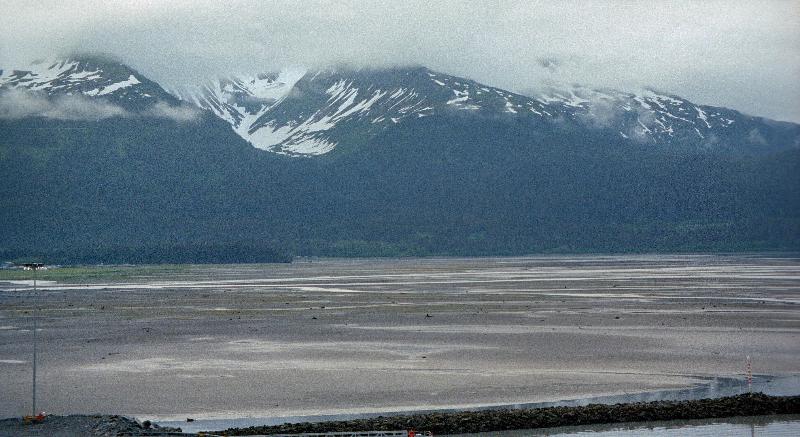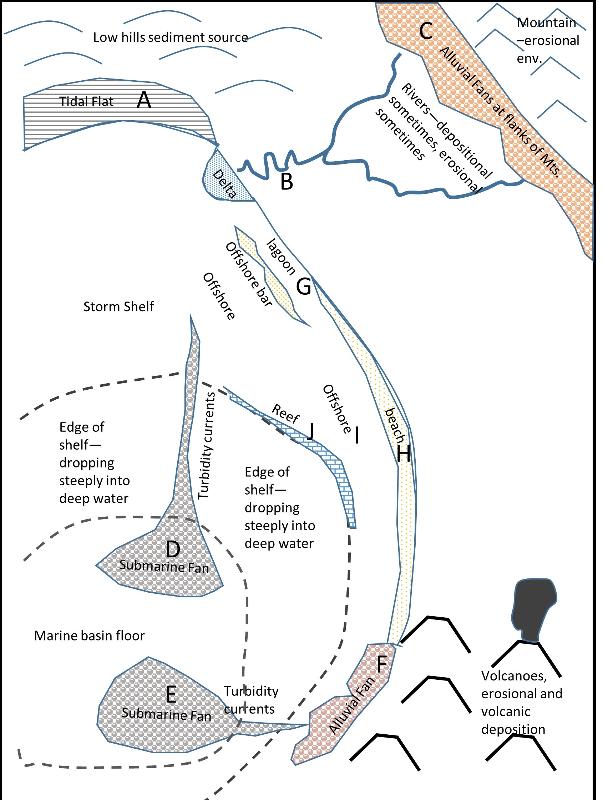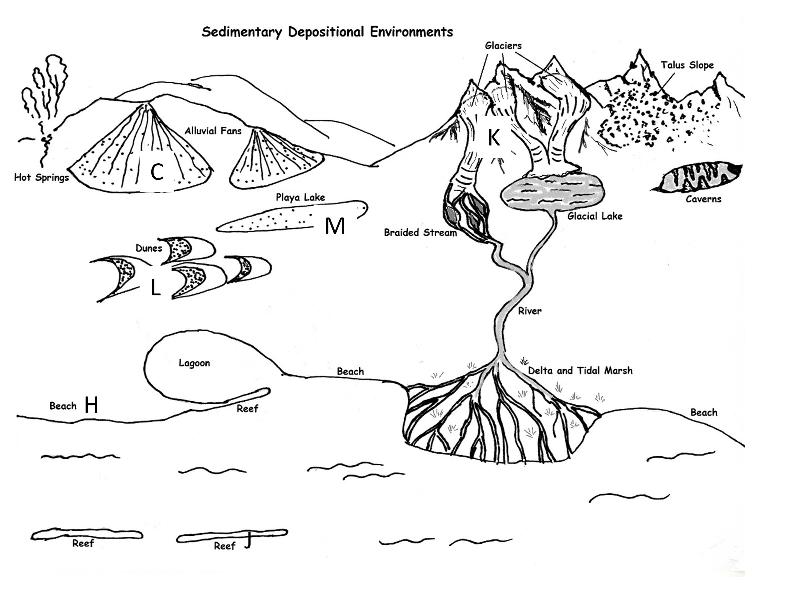Sedimentary Depositional Environments Review Exercise
Earth Science Extras
by Russ Colson

Glacial hanging valley (background) and tidal flats (foreground) in Alaska,2002.
Different types of sediment are deposited in different types of depositioinal environments, reflecting the energy of the environment (how fast the water is flowing, how vigrorous the waves are, or how strong the wind is) and other environmental factors (e.g. evaporation rate vs rainfall, glacial conditions, presence of turbidity currents, conditions appropriate for reef development, etc). The exercise below is intended as a review of some of the sediment characteristics that are typical of these environments.
The illustrations below show in simplified and conceptual form the locations of some important depositional (and erosional) environments that will be used in the following challenge.


Note: Deltaic environments are complex and varied environments, but often produce silty sediment. Glacial lake deposits depend on the depth of the lake and may vary from the shore into the lake interior. They sometimes produce varves, sediment laminae that alternate in color from summer to winter deposition. Caves and hot springs often have both erosion and deposition of calcium carbonate or silica sediments.
last updated 8/7/2020. Thanks to Jennifer Lepper for the artwork for the secon of the depositional environments illustrations. Other text and pictures are the property of Russ Colson.
